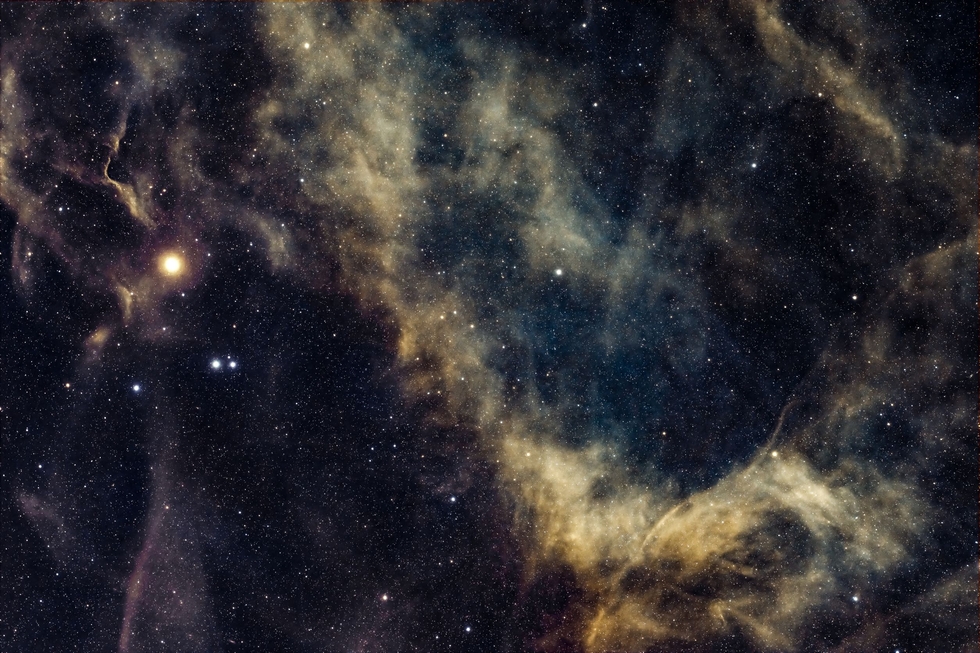HALPHA FILAMENT AND PI PUPPIS
HALPHA FILAMENT AND PI PUPPIS
Pi Puppis (π Pup / π Puppis) is an orange star of magnitude 2.71 in the constellation Puppis. It is 804 light-years from Earth.
Although little known, it has a proper name, Ahadi, with the meaning of great promise. The star is located in the direction of a very dispersed open cluster known as Cr 135, which is slightly in the foreground of the star when viewed from Earth. Its moderately southern position means that this star is especially observable from the southern hemisphere, where it is high in the sky in the temperate belt; From the northern hemisphere, on the other hand, its observation is more penalized, especially outside its tropical belt. Its magnitude of 2.7 allows it to be easily seen even from moderately sized urban areas.
The best time to observe it in the evening sky is between February and June; In the southern hemisphere it is also visible for most of the winter, thanks to the southern declination of the star, while in the northern hemisphere it can be observed in particular during the boreal spring months.
From a radiant meteor in the direction of this star radiates the Pi Puppidi meteor shower, which is active during the month of April.
Although little known, it has a proper name, Ahadi, with the meaning of great promise. The star is located in the direction of a very dispersed open cluster known as Cr 135, which is slightly in the foreground of the star when viewed from Earth. Its moderately southern position means that this star is especially observable from the southern hemisphere, where it is high in the sky in the temperate belt; From the northern hemisphere, on the other hand, its observation is more penalized, especially outside its tropical belt. Its magnitude of 2.7 allows it to be easily seen even from moderately sized urban areas.
The best time to observe it in the evening sky is between February and June; In the southern hemisphere it is also visible for most of the winter, thanks to the southern declination of the star, while in the northern hemisphere it can be observed in particular during the boreal spring months.
From a radiant meteor in the direction of this star radiates the Pi Puppidi meteor shower, which is active during the month of April.
SPECIFICATIONS
Telescope
AUS-2-CMOS
Camera
QHY 600M
Location
HEAVEN'S MIRROR OBSERVATORY, AUSTRALIA
Date of observation
25-26-27-29-30/ 03-2024
Filters
HSO
Processing
Pixinsight and Photoshop
Credits
Credit Sauro Gaudenzi / Data Telescope Live


